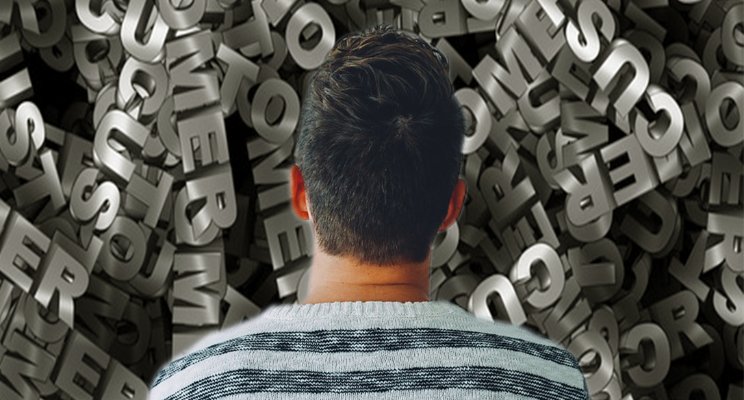We all have habits, good and bad. Few of us remember how they formed. Few of us know how to change them—especially those bad ones. However, understanding how habits develop and their influence on our behavior can be a powerful tool for tuning up our Customer Experience.
The scientific definition of a habit is anytime your mind prepares you to respond in a certain way based on some environmental cues or stimuli. When you discuss habits in relation to the two systems of cognitive behavior, or what we call the Intuitive System (emotional and fast) and Rational System (logical and slow), the Intuitive System governs habitual behavior.
How the Helpful 8-year-old Forms Habits
My co-author of The Intuitive Customer (Palgrave Macmillan, 2016), Professor Ryan Hamilton of Emory University, compares the Intuitive System to a helpful 8-year-old. Like the 8-year-old, the Intuitive System wants to help, to make things easier, but it doesn’t always have all the information it needs to help for real. In other words, it almost gets things right some of the time and does pretty good the rest of the time. Habits are an example of when the Intuitive System is trying to help.
For example, when I go to pay for something, I always reach for my American Express (AmEx) card. I automatically go to the part of my wallet where I keep it and use it for my purchase. I do not consciously choose it every time; I just do it. That is an example of a habit. I have a stimulus, e.g., it’s time to pay for something. My Intuitive System activates my habit, e.g., it tells my subconscious mind to reach for the AmEx.
Now, before I had the AmEx, I reached for another card. Reaching for the AmEx, in the beginning, was a deliberate process. The stimuli would occur, meaning it would be time to pay, and I would think as I looked through my wallet, “What card should I use?” Then, I would choose the AmEx because I liked the rewards they provided. Over time, my helpful-8-year-old Intuitive System noticed that when it was time to pay, I was consistently reaching for my AmEx card. So, when it was time to pay the next time, my Intuitive System responded by automatically having my subconscious reach into the wallet for the AmEx. This instance is an example of when the 8-year-old is helpful. However, when the helpful-8-year-old Intuitive System has me reach for the cookies after lunch, it is not helpful!
The Three Parts of Habit: Cue, Routine and Reward
Now, the scientific definition only explains part of what makes up a habit. Pulitzer-Prize winning reporter Charles Duhigg wrote The Power of Habit a couple of years ago that gives a more robust definition of habits, describing the three parts of habits. These are the Cue, Routine, and Reward. This video demonstrates the concept in action:
Customer habits are an enormous driver of consumer behavior. As an example, Ryan habitually buys toothpaste on a particular aisle at the store (Cue). His Intuitive System knows where it is on the shelf and what color the box is and he grabs it (Routine), and moves on without giving it much thought (Reward). Moreover, because he doesn’t think about it, the toothpaste competitors present in the aisle don’t have a chance.
Disrupting the Cue
Understanding the three parts of the habit as Duhigg described can help the competitor brands get Ryan’s business. If they can intercept Ryan before he reaches the aisle, say with an end-cap display or another attention-grabbing device in store, the competing toothpaste brand could disrupt the Cue and redirect Ryan’s Routine behavior. It is vital, however, that the disruption of the Cue communicates the new anticipated Reward.
The fact is I don’t see a lot of organizations research customers’ habits. Don’t get me wrong; they do research; just not research about Cues that drive customers’ habits. Instead, organizations ask customers questions about customers’ likes and dislikes or price preferences, etc. However, habits are a powerful driver of customer behavior, so recognizing what is triggering your customers’ habits is essential to comprehending their behavior.
Have you gained from studying your customers habits? Let us know in the comments below.
Learn more about habits and how they affect customer behavior in the recorded webinar we did as part of ourIntuitive Customer Conversations webinar series. These FREE and informative webinars are designed to expand on the ideas behind understanding customer behavior.
If you liked this article, you might also enjoy these:
Revolutionary Thinking on Customer Loyalty
Astonishing BIG Gains from Little Changes!
Act Now to Turn Customer Pain Points into Pleasurable Profits
Colin Shaw is the founder and CEO of Beyond Philosophy, one of the world’s leading Customer experience consultancy & training organizations. Colin is an international author of five bestselling books and an engaging keynote speaker.
Follow Colin Shaw on Twitter @ColinShaw_CX


